
"You're the First To Tell Me That", Sharing Critical Information That Can Spare Rochester Oak Trees from Harm
Monster Tree Service has had the privilege of collaborating with thousands of homeowners in the Rochester area. We're proud that many have commented on our extensive knowledge and unwavering passion for promoting the overall health of the trees and shrubs in their landscape. One recurring sentiment that we have heard from homeowners is that we are the first, and sometimes the only, company to offer precise recommendations regarding the optimal timing for pruning Oak trees. Our oak pruning practices, which follow New York State guidelines for controlling Oak wilt, will help keep Rochester Oaks in good health for many years to come.
There are several species of oak trees that are popular in Rochester, NY, each with their own unique characteristics.
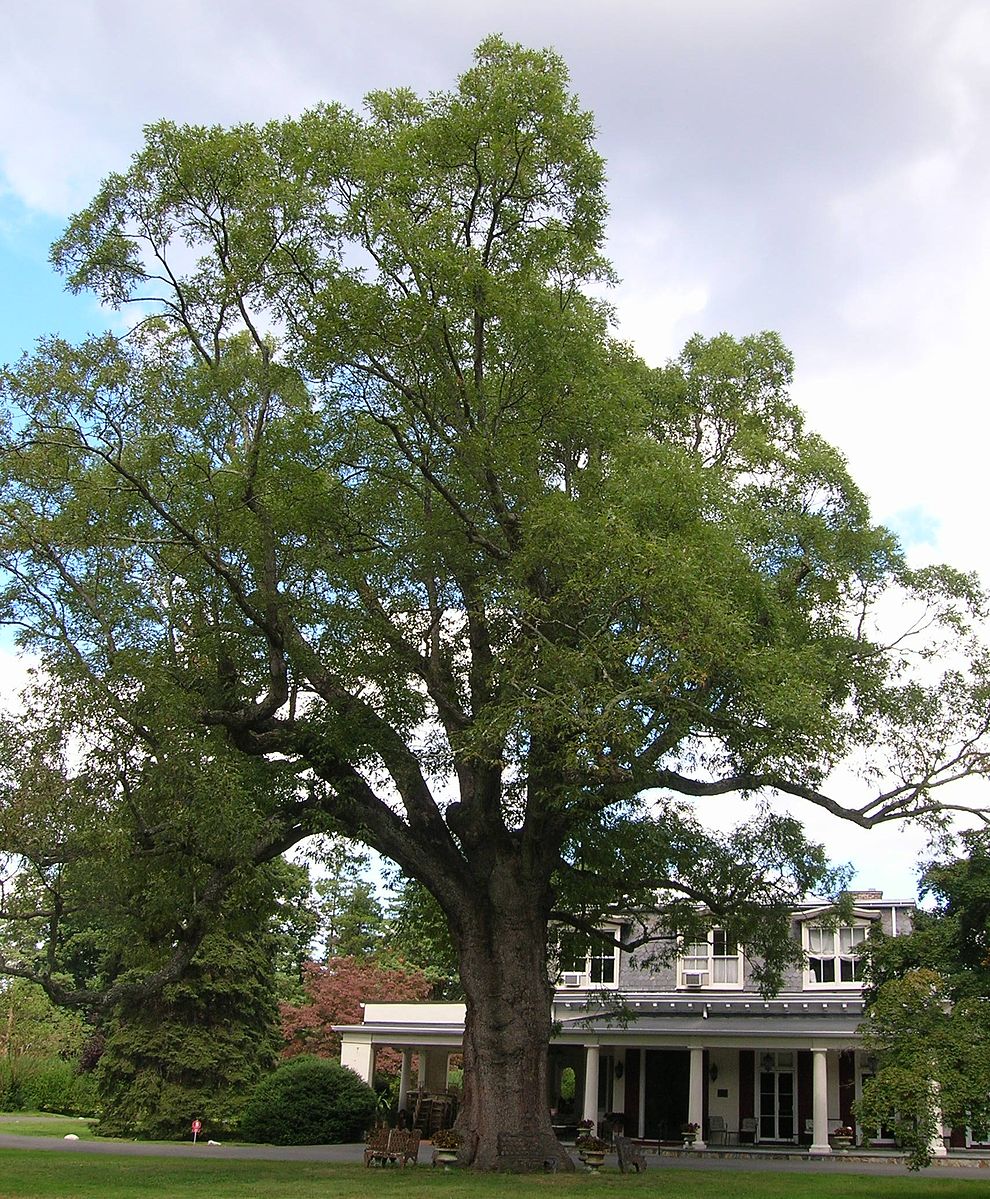
Oaks are the fourth most common tree in New York. Like the one depicted above, they serve as strong foundational centerpieces on many properties.
Here are some of the most common species of oak trees found in Rochester:
- Northern Red Oak (Quercus rubra):This is one of the most prevalent oak species in Rochester. It is a fast-growing tree that can reach a height of 70-80 feet, with a spread of 50-60 feet. It is known for its brilliant fall foliage, which turns a bright red color in Autumn.
- White Oak (Quercus alba):It is a slower-growing tree that can reach a height of 80-100 feet, with a spread of 50-80 feet. The largest known White Oak in New York State is 123 feet tall! This species is known for its strong, durable wood and its tolerance to pollution.
- Pin Oak (Quercus palustris):This oak species is commonly found in parks and along streets in Rochester. It can reach a height of 60-70 feet, with a spread of 25-40 feet. It is known for its pin-like tips and deep sinuses on its leaves. It is tolerant to urban conditions but can be prone to chlorosis - see our August newsletter highlighted tree for more information!
- Bur Oak (Quercus macrocarpa):This oak species is commonly found in rural areas and along streams in Rochester. It can reach a height of 70-80 feet, with a spread of 60-80 feet. It is known for its large acorns and is tolerant to drought.
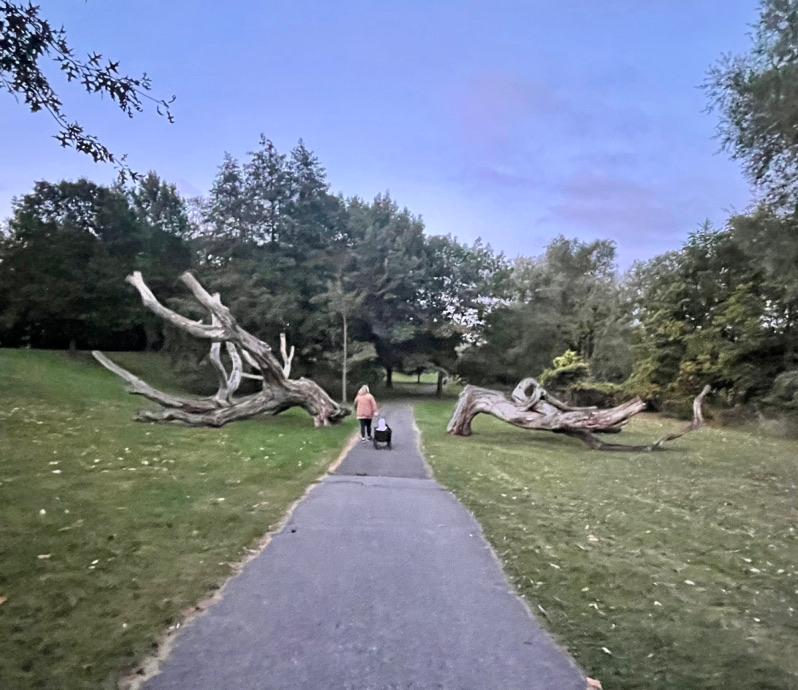
This white oak, even after it was struck by lightning on July 4, 2010, remains a foundational piece of Genesee Valley Park.
Oak wilt is a devastating fungal disease that primarily affects oak trees, however, species within the Red Oak group are significantly more susceptible to the disease than species within the White Oak group. The Oak wilt pathogen, Bretziella fagacearum, disrupts the tree's vascular system, blocking the flow of water and nutrients. Oak wilt can be transmitted in a variety of ways. One way is by sap-feeding beetles that carry the Oak wilt fungus on their bodies. The sap-feeding beetles, who are active during the growing season, are attracted to a pheromone released by the tree at pruning or broken branch sites and spread the fungus to healthy trees as the beetles feed on the sap released at the site of the wound. The other way Oak wilt can spread is through interconnected roots between an infected tree and healthy trees. This is known as root-to-root transmission. Preventing root transmission is challenging because it's a natural process in closely spaced oak populations.
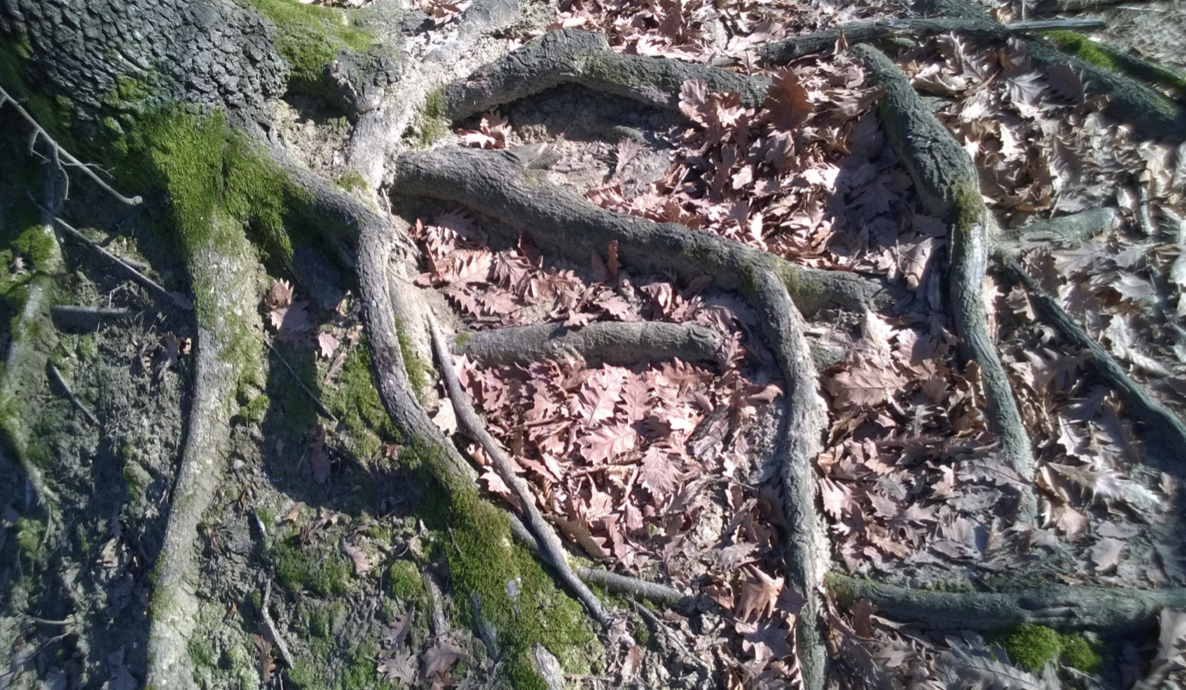
The surface roots, in the picture above, show how root systems have the ability to become interconnected, also known as grafting. This is very similar to how roots behave underground.
Symptoms of oak wilt include:
- Wilting and discoloration of leaves, usually starting at the top of the tree and progresses downward.
- Brown discoloration of the sapwood beneath the bark. Sometimes a crack in the bark will result from a fungal mat growth.
- Sudden and rapid decline of the tree. This decline can be as quick as 1-2 months in red oaks.
Unfortunately, there is no known cure for Oak wilt. The best course of action is to prevent spread through early detection and prompt management. Here are some steps you can take to slow and stop the spread of Oak wilt.
Preventative Measures: The NYS DEC and many universities recommend only prune oaks outside of their growing season, typically November through March, when temperatures are consistently below 40 degrees. If minor pruning is necessary during this time, immediately seal the wound with a tree-wound dressing. You should also cover wounds on oaks caused by lawnmowers, trimmers, or any other wound that has damaged the bark and left exposed wood. Sealer can be purchased at most home and gardening stores. Ask your arborist what to buy if you are thinking of doing some pruning on your Oak. Additionally, avoid moving firewood from Oak wilt-affected areas, as the fungus can be present in the wood.
Cultural Practices: Maintain tree health by watering and fertilizing as needed. You should avoid injury to the trunk or roots. Trees that are stressed or injured are more susceptible to Oak wilt.
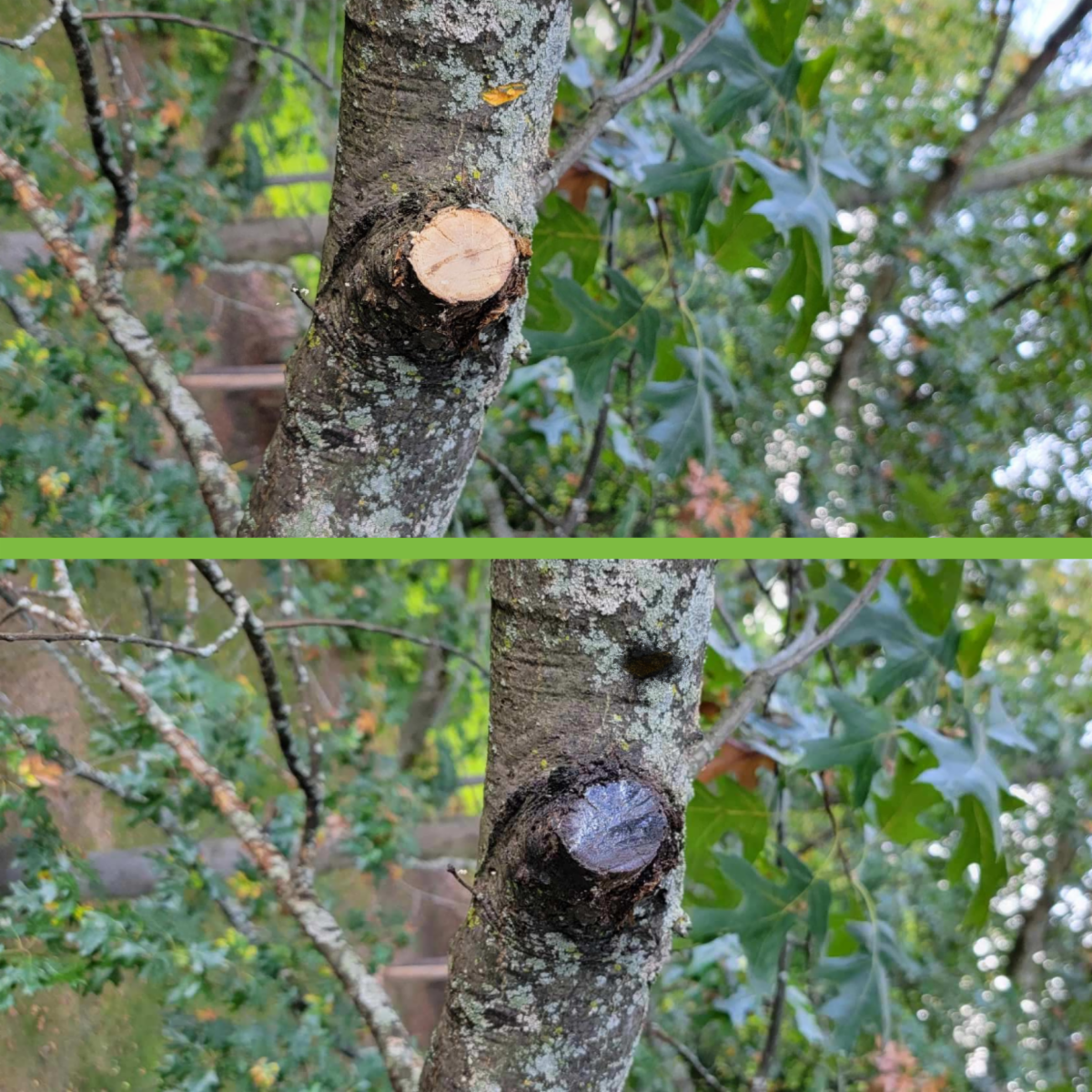
Even small pruning cuts must be sealed very quickly during the growing season. Reasons for pruning during the growing season may include safety concerns, very particular disease and pest management, or potential damage to building/structures, but should be avoided when possible.
Treatment: Preventative and post-infection treatments are available. Preventative treatments have proven to be successful but annual treatments will be required if you choose to go this route. Certain varieties of Oak may be candidates for post-infection treatments; however, it's not recommended as it is expensive and typically only delays when the tree will succumb to the disease.
Removal: If Oak wilt has advanced to the point of total tree decline, the tree should be removed immediately, and all debris should be processed according to NYS DEC guidelines. Excavation should be performed if there are other oaks nearby to identify and remove any grafted roots in order to minimize the chance of oak wilt spreading to the other trees.
Overall, prevention and early detection are key to managing oak wilt. If you suspect that your oak trees are affected by oak wilt, contact a certified arborist or your local forestry office for guidance on how to proceed.
Find out more:
DEC Updates Oak Wilt Emergency Order for Ontario and Yates Counties
Schedule a consultation with a Monster Arborist
Monster Fun
Which Oak Species' Fall Foliage Do You Find Most Captivating?
A. Northern Red Oak (Quercus rubra) - Know for its vibrant red leaves in the fall.
B. Burr Oak (Quercus Macrocarpa) - Admired for its mix of gold and russet tones.
C. Pin Oak (Quercus palustris) - Appreciated for its fiery red and orange foliage.
D. Swamp White Oak (Quercus bicolor) - Loved for its yellow and golden colors.
Monster in the Neighborhood
Last winter we worked with the New York State Department of Environmental Conservation in Ontario County where we removed several trees that had confirmed cases of oak wilt. The NYS DEC is monitoring the area using aerial and ground inventories. These assessments help the DEC pinpoint possible outbreak areas and act quickly in reducing its spread. We at Monster Tree Service followed all DEC guidelines in removing and hauling away the infected wood.

Wood is being split to a size that will be suitable to be processed into woodchips.

![]()
Our climber, Mike, begins a removal of a diseased oak tree while a representative from the NYS DEC looks on.

Split stem wood is being sent through the chipper before being hauled away.
Tree Highlight
Swamp White Oak (Quercus bicolor)

Also called: Swamp oak
Lifespan: It can live to be over 300 years old!
ID features: Height- typically 50-70 feet tall but can reach 100 feet in proper conditions.The canopy spread ranges from 40-60 feet-- they like to grow broad, open, and rounded.
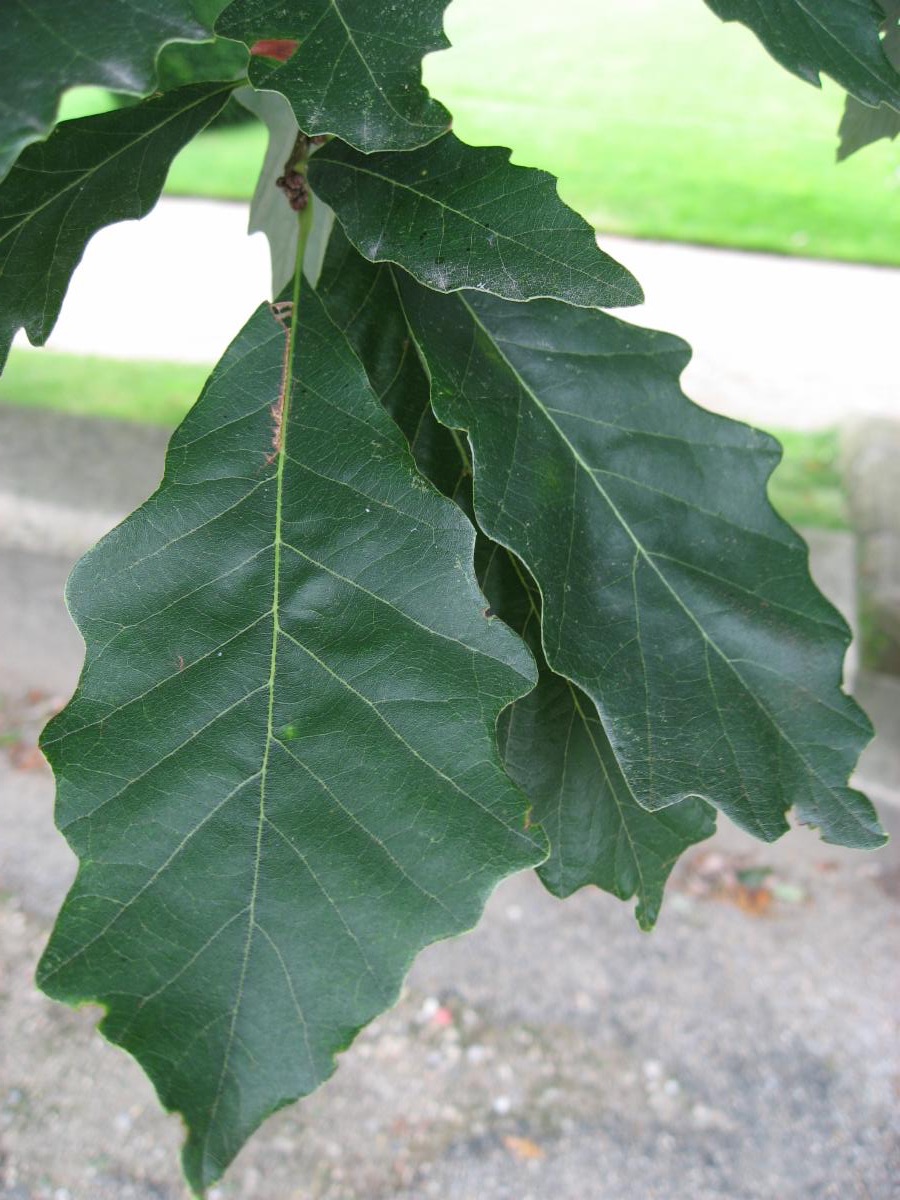
Leaves- broad and simple, with a distinct shape featuring rounded lobes. It is a deep leathery green and turns a golden yellow in the fall.
Bark- initially smooth and light gray to light brown, later developing deep furrows and ridges as the tree matures, creating a rugged and visually textured appearance.
Fruit/seed- The swamp white oak produces small acorns about 1 inch long as its fruit and seed. The acorn cap covers approximately one-third of the acorn.


Fun facts:
- This oak lives up to its name by thriving in wetland areas, such as swamps and along riverbanks. It's one of the few oak species that can tolerate such waterlogged conditions.
- Swamp white oak produces a large crop of acorns every 3-5 years, with lighter crops produced in the off years. As with most oaks, the acorns are treasured by squirrels.
- Slow and steady! Its slow growth rate allows it to develop a robust and resilient structure.
Ask the Arborist
Liz
ISA Certified Arborist NY-6554A
NYSDEC 3A Certified Applicator
We were THRILLED to have one of our ISA Certified Arborists, Liz, speak with Fox News on Good Day Rochester about invasive pests in our area. Liz talked about oak wilt as well as two additional pests. Watch the full interview here.
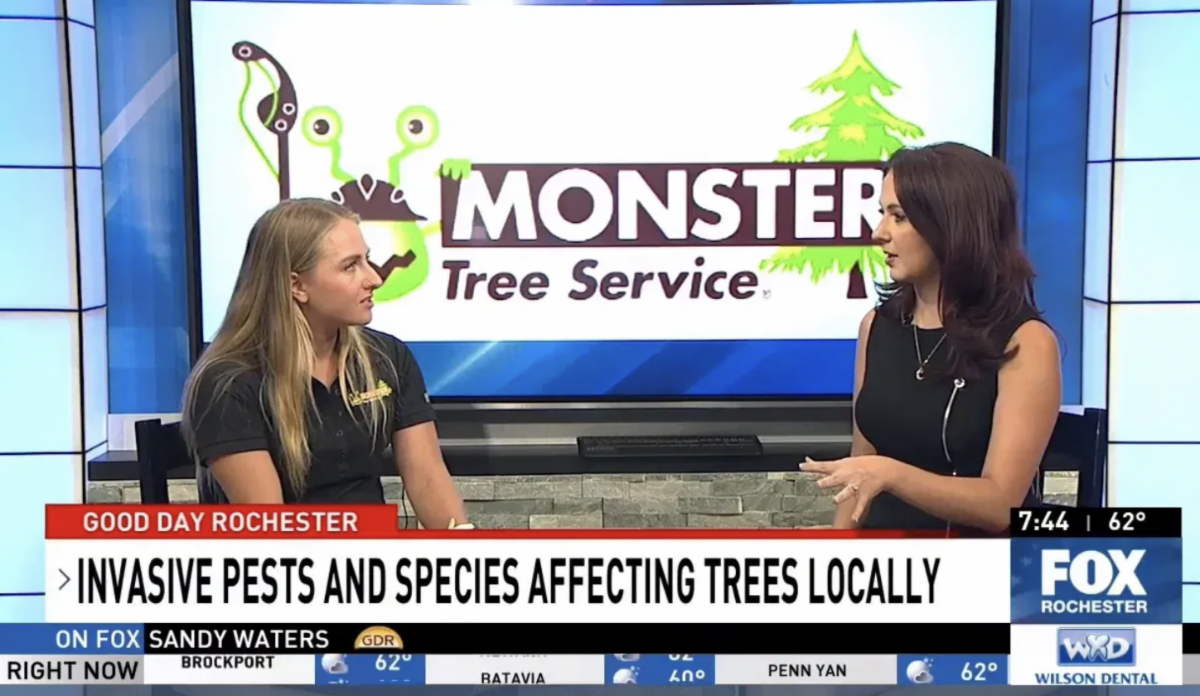
Q: What is oak wilt?
A: Oak wilt is a serious fungal disease. It disrupts the tree's ability to transport water and nutrients, leading to wilting, discoloration, and eventual death. This disease can spread rapidly. It can be transmitted through open wounds.
Q: Why should you not prune oak trees during their growing season?
A: During this time, sap-feeding beetles are highly active and attracted to the sap produced by freshly cut wounds on oak trees. These beetles can carry oak wilt spores on their bodies, inadvertently transmitting the disease to healthy trees as they feed. To minimize this risk, it's best to prune oak trees during their dormant season, typically in late fall or winter when the disease-transmitting vectors are less active.
Q: What are the earliest signs of oak wilt?
A: Signs may include wilting and discolored leaves that drop prematurely. You'll notice when the leaves drop that they are still green along the main vein. If you have multiple trees on your property, you can compare leaf appearance and time of drop with others.
Q: Should a wound sealer always be applied to trees?
A: Use of pruning sealers are no longer an industry best practice outside of pruning oaks in the summer. Instead, we focus on proper pruning techniques and maintaining overall tree health. Healthy trees have a natural defensive system that works to protect the tree when proper pruning cuts are made.
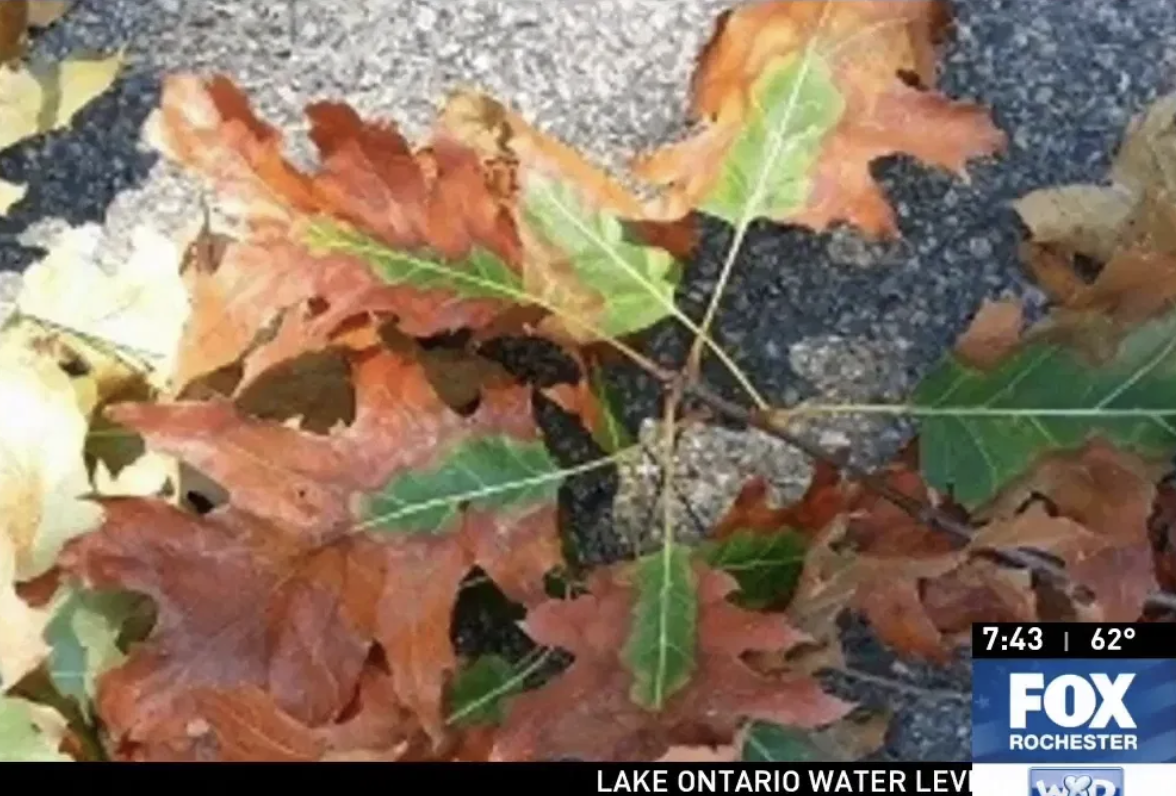
Above: Fallen leaves from an oak wilt infected tree.
Below: An oak wilt fungal spore mat revealed under the bark.


